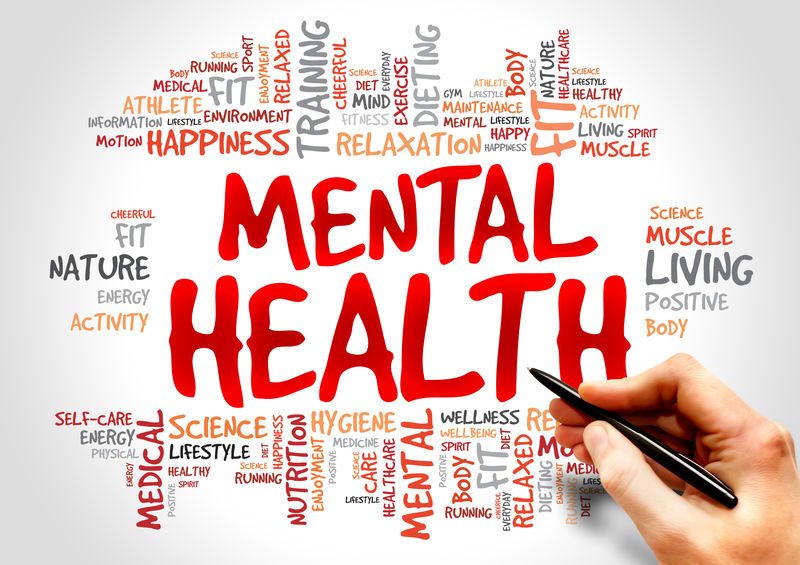
In recognition of Mental Health Awareness month, I thought I would marry my background in psychology with my experience as a personal trainer to address the unique position we are in to either provide emotional support when our clients need it or even recognize red flags when they are raised.
As personal trainers, one of our roles is to support the mindset of our clients so they can attain optimal results. Hopefully, we’re building trusting and professional relationships. Oftentimes, clients start to confide in us since we see them regularly and work closely with them towards their health goals, creating opportunities to share frequently and sometimes deeply.
What do we do when clients confide in us about issues that are concerning, specifically about their mental or emotional state that may be outside a personal trainers scope of practice? Or how do we handle it when we notice symptoms that could be signaling a greater mental health issue?
1) Listen to hear. Ever hear of the expression we listen with two ears and speak with one mouth? Sometimes, it becomes important to listen more than we speak and with an intention to hear what the client is saying rather than preparing our response while the client is sharing.
2) Stay away from advice giving and diagnosing. When we do finally give feedback, we want to be mindful not to give advice or provide our thoughts on if we think the client has a particular disorder (i.e.: depression, anxiety, PTSD). It’s not in our scope of practice and many times, clients are looking for a sounding board. In some cases, the client can come up with his/her own solution simply by talking about a situation.
3) Offer emotional support. This could come in the form of a client’s favorite workout, a change in scenery or setting of a workout or articulating words of encouragement and support.
4) Share your experience. If you’ve experienced something similar and you’re comfortable sharing about it, it could be helpful. Here, it’s important to know your client and your comfort level with sharing personal stories. You also might not want to share so much that it takes away from the client’s experience.
5) Manage the time for discussion. Here, assertiveness is in order. Sometimes, when a client is sharing personal information, you can set a timer or set aside a part of the session to address it. Once it’s addressed the session can continue and be kept moving.
If you find that the situation needs more attention and time than the current session, it might be time to refer the client to a credentialed mental health provider. A key sign to look for is safety.
Safety becomes a concern when the client starts to sound like he/she is in an unsafe/harmful situation or starts discussing harm to self and others (American Psychiatric Association, 2013).
Recognizing Mental Health Red Flags
While some clients may share openly with you about the troubles they have been experiencing, others may not even themselves recognize they are in serious distress, or perhaps, are too embarrassed or ashamed to discuss it with anyone. This does not mean they can’t be helped or that they shouldn’t be.
As a personal trainer, you can take note of changes in demeanor or behaviors that are out of step of your clients’ normal modus operandi.
Additional signs that there may be a more serious problem:
1) The client is unable to focus on the fitness sessions and it’s difficult to re-direct the client to the task at hand.
2) You start to feel uncomfortable with the interaction because the primary focus has become providing emotional support versus fitness sessions.
3) The client may burst into tears unexpectedly, have severe mood swings that are unusual, or even cancels last minute more often than usual.
If any of the above his scenarios happens repetitively (a good benchmark of time is two weeks), you may want to talk to your client about how he has been feeling. The DSM-V (Diagnostic and Statistical Manual of Mental Disorders, fifth edition) indicates two weeks as a benchmark prior to making a diagnosis for a number of disorders (one example is depression).
The DSM-V manual is used by the American Psychiatric Association (APA) to diagnose mental health disorders by credentialed professionals. The criteria outlined in the manual has been compiled by hundreds of credentialed professionals in the field and tested with scientific rigor with the goal to improve diagnostic, treatment, and research methods (APA, 2019).
The complexity and levity of diagnosing and seeking treatment for depression and any other mental health disorder is beyond the scope of practice of a fitness professional, of course. But understanding the symptoms of mental health disorders, like depression, as they are written may help you to recognize a serious problem that needs to be referred out.
For example, the criteria to diagnose depression is as follows (Shelton, 2019):
Depression DSM-5 Diagnostic Criteria
The DSM-5 outlines the following criteria to make a diagnosis of depression. The individual must be experiencing five or more symptoms during the same 2-week period and at least one of the symptoms should be either (1) depressed mood or (2) loss of interest or pleasure.
1. Depressed mood most of the day, nearly every day.
2. Markedly diminished interest or pleasure in all, or almost all, activities most of the day, nearly every day.
3. Significant weight loss when not dieting or weight gain, or decrease or increase in appetite nearly every day.
4. A slowing down of thought and a reduction of physical movement (observable by others, not merely subjective feelings of restlessness or being slowed down).
5. Fatigue or loss of energy nearly every day.
6. Feelings of worthlessness or excessive or inappropriate guilt nearly every day.
7. Diminished ability to think or concentrate, or indecisiveness, nearly every day.
8. Recurrent thoughts of death, recurrent suicidal ideation without a specific plan, or a suicide attempt or a specific plan for committing suicide.
To receive a diagnosis of depression, these symptoms must cause the individual clinically significant distress or impairment in social, occupational, or other important areas of functioning. The symptoms must also not be a result of substance abuse or another medical condition.
As you can see, it is very specific and therefore vital for fitness professionals not to replace the diagnostic/treatment aspect of mental illness but rather to support and help the client reach fitness goals. It is also important to have awareness of when to refer the client out by being aware of signs and indicators for something that needs more attention.
A wonderful resource is the Desk Reference to the Diagnostic Criteria from DSM-5(TM). This guide is a truncated version of the DSM-V and is great as a point of reference.
Remember to be kind and empathetic for whatever your client is experiencing. It may be difficult to confront a difficult issue or uncomfortable to discuss emotional states with your client. But, you may, indeed, be one of the only people who see your client regularly enough to recognize the signs of a mental health need.
While suggesting the client seek help from someone in a professional position to provide the appropriate assistance is not an easy thing to do, ignoring the signs you have noticed can be detrimental to your client. It is encouraged to use courage in this situation to have the conversation with your client in a supportive manner. It is also beneficial to be aware of supportive agencies in your community in case you need assistance.
You may broach the topic gently and with compassion, while assertively reminding your client of your concern towards overall well-being and safety. In some occasions, the client may be very receptive and in others, not so much. In this case, you can enlist support through resources or the use of 9-1-1. Hopefully, the need for this does not arise. Allowing the client to process what you’ve noticed can be helpful.
Being mindful that you are a trusted fitness professional can also be beneficial to the situation. It is great to remember your role and that there is a positive relationship exists between you and the client. This can be a very healing conversation and an impactful experience for you both.
References:
American Psychiatric Association (2013) Desk Reference to the Diagnostic Criteria from DSM-5(TM) 5th Edition. American Psychiatric Association: Washington D.C.
American Psychiatric Association (2019). Diagnostic and Statistical Manual of Mental Disorders (DSM–5). Retrieved from: https://www.psycom.net/depression-definition-dsm-5-diagnostic-criteria/
Shelton, J. (2018, March 18). Depression Definition and DSM-5 Diagnostic Criteria. Retrieved from: https://www.psycom.net/depression-definition-dsm-5-diagnostic-criteria/








